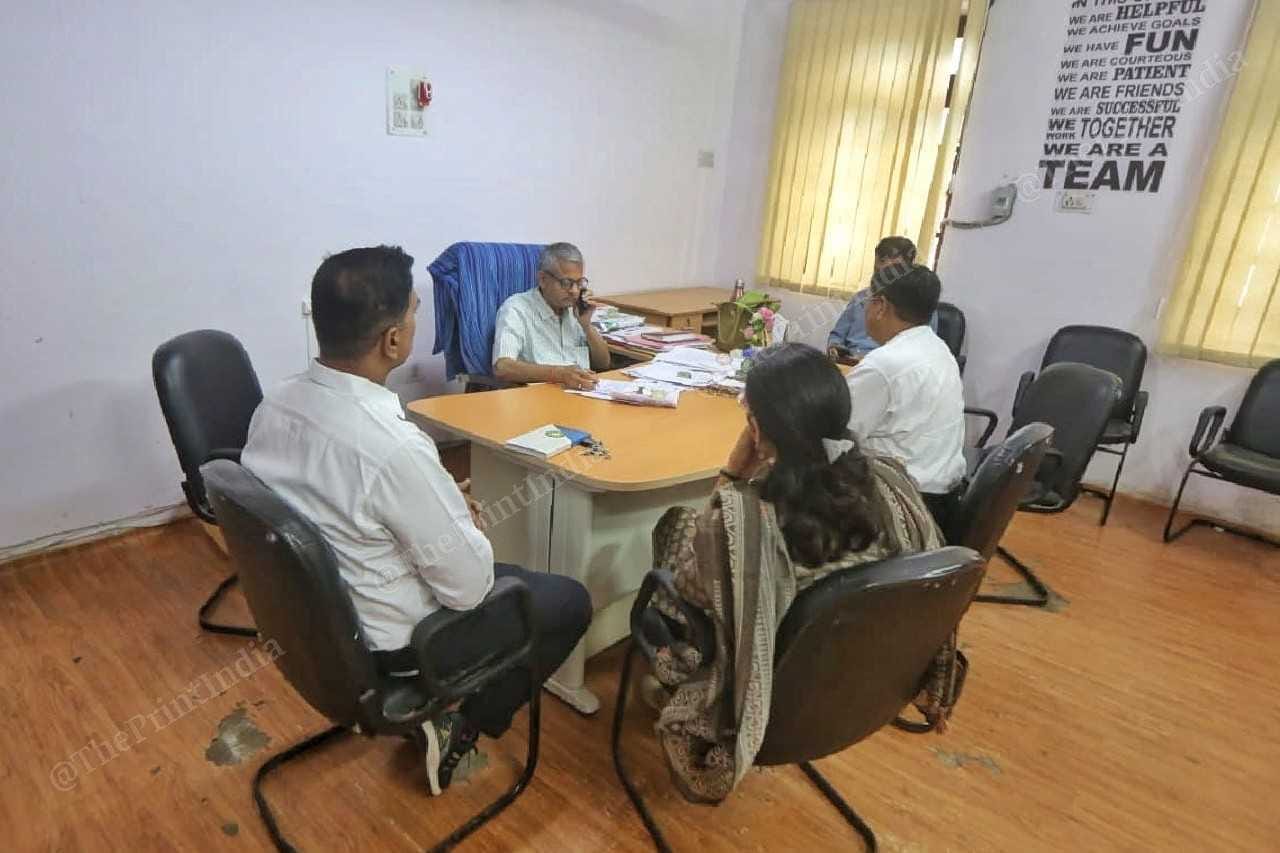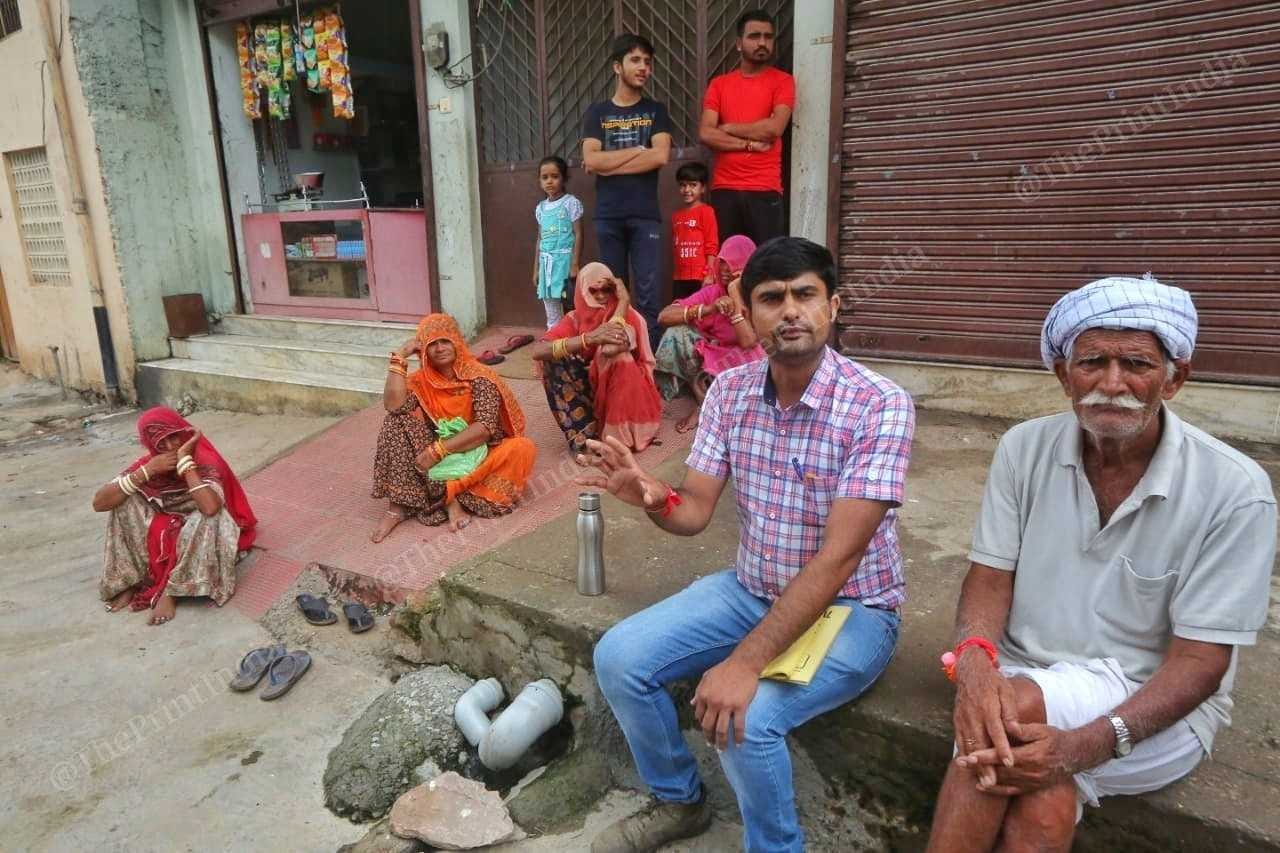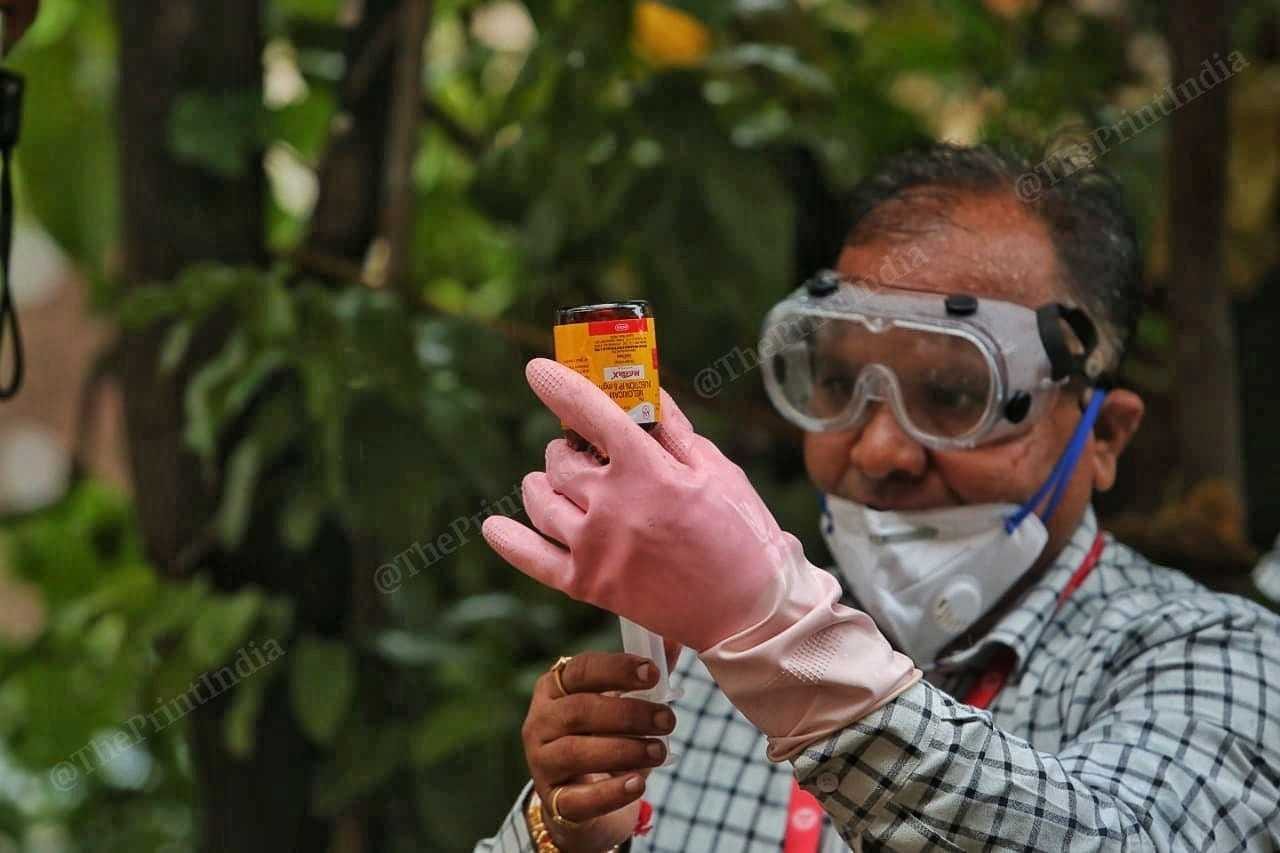Udaipur: The Udaipur district administration, which is working on a war footing to stem outbreaks of lumpy skin disease among cattle in several villages in the area, has set up a Covid-style control room at a government-run veterinary hospital in the city.
While a high number of lumpy skin disease infections were being reported from Barmer, Jaisalmer, Jodhpur and Jalore, the adjoining district of Udaipur started seeing cases of the disease only in the last three weeks.
At the veterinary hospital in Chetak Circle, Udaipur, Surya Prakash Trivedi, joint director, animal husbandry, is running a control room in his office.

“We set up the control room in the last week of July, when we got the first case (of lumpy skin disease) in Udaipur. The control room has been established at the district level, and at the block level we have created a rapid response team so that they can deal with suspected cases at the earliest,” Trivedi told The Print.
During the Covid pandemic, several metros like Delhi and Mumbai had set up control rooms that kept track of cases at the district and ward levels — recording new infections, availability of hospital beds and recoveries. The Udaipur administration is taking a similar approach to contain the spread of lumpy skin disease in the district, by ascertaining where animals need treatment, or vaccinations, or be isolated.
So far, 4,854 head of cattle have been infected in the district, of which 82 have died, according to Trivedi. To add to the crisis, out of 23 veterinary officer posts in the district, only 11 are occupied.
Working with volunteers from a local NGO called ‘Vriksh’, Trivedi is fielding calls from different gram panchayats across Udaipur, each asking for a doctor to visit either for treatment or to report suspected cases of lumpy skin disease.
Based on these calls, Kailash Vaishnav, who runs the Vriksh NGO, then coordinates with the nodal veterinary officer of the concerned ward. He passes on the information to the doctor, who then travels to remote villages to get more information.
ThePrint followed one such team in Udaipur.
Skipped lunches, non-stop duty, false alarms
At a distance of over 20 kilometres from Udaipur, is the village of Sare. Nestled among hills, all roads leading to it are filled with potholes, with incessant rains in the region making matters worse. Sare has no mobile network connectivity. There is a designated spot atop a nearby hill where villagers go to make calls.
Dr Subash, the veterinary officer stationed at Chirwa village, has received information that there is a probable case of lumpy skin disease in Sare.
“The village is currently hyper alert. So we get a lot of false alarms as well. This one is likely to be a false alarm since there are still no cases in any of the surrounding regions,” says Dr Subash. At Sare, he gathers the villagers and patiently listens to them describe the case.
He then briefs the gathering on what the disease is, how it spreads through mosquitoes, flies and ticks, and what precautions need to be taken to prevent it from spreading.
“This disease can affect the milk production of your cattle,” he tells the villagers. “Please tell everyone to stay alert for just a few weeks till this subsides.”

Dr Subhash’s team then distributes pamphlets with information about the disease, along with medicines for deworming the cattle. “Deworming ensures that the animal’s immune system is able to fight pathogens better,” he explains.
The veterinary officer’s day is now divided in two halves. The first is dedicated to visiting villages that have no infections. In the latter half of the day, he visits villages with lumpy skin disease outbreaks for treatment.
“I do this to ensure I do not end up carrying the infection from one village to another,” he says. The areas assigned to him have over 10,000 cows that need attention.
Meanwhile, at Badgaon animal clinic, livestock assistants Khushbu Sharma and Rajendra Kumar Meena have arrived completely drenched. Since 8 in the morning, the duo have travelled to several villages including Thur, Loyara and Chilakwas.
The team, along with Senior Veterinary Officer Dr Duttaray Choudhary, skips lunch, restocks on medicines and syringes, and heads back out again to treat more animals.
From the Badgaon centre, the team first goes to Madar to treat a family’s cow which has been infected with lumpy skin disease.
On reaching, Dr Choudhary realises that despite their advice to isolate the calves of the infected cow, the family has not done so. As a result, the calves are now developing symptoms.

“We have not taken any holidays in the last 10 days,” he says. Through a WhatsApp group, the district animal husbandry department keeps track of the number of cases and treatment on ground.
While medicines are in plenty, the team notes that the region has not received any goatpox vaccines due to shortage.
There is currently no cure for lumpy skin disease, and treatment mostly targets clinical symptoms. The vaccine being currently administered is the same as that for the goatpox virus, although two institutes of the Indian Council of Agricultural Research have now reportedly developed an indigenous vaccine for the disease, which the Union government is planning to commercialise.
(Edited by Gitanjali Das)






